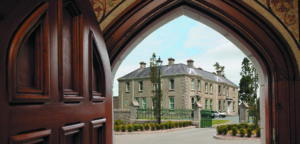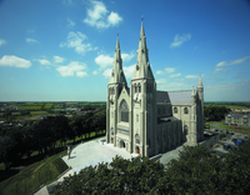Safety is of prime importance during any activity. This is not just the responsibility of the leader in charge but of every worker including the Safeguarding Children Representative and the priests of the parish. All church personnel should be aware of the following guidelines when preparing safe activities for children (under 18 years).
- Adequate supervision ratios should be maintained at all times with at least two adult supervisors at all times. The Archdiocese adheres to the recommended ratios outlined by the NBSCCC which are:
Under 8 years
0 to 2 years = one adult supervisor for 3 children
2 to 3 years = one adult supervisor to 4 children
3 to 7 years = one adult supervisor to 8 children
(6 children for outdoor activity, 4 for pilgrimages/residentials)
8 years and over
Two adult supervisors to 20 children (15 children for outdoor activity).
There should be one additional adult supervisor for every 10 children.
For residentials and pilgrimages this ratio should be decreased to one adult supervisor for every five children. This is to allow for adequate time off for all leaders.
Under no circumstances should a leader work alone with a child or young person.
- Personal details of children should be sought as part of the registration process and permission slips must be completed for all activities. One person should be assigned the responsibility for the storage of this information and he/she should ensure that it is stored safely.
- Contact details in case of emergency should be accessible during all activities for all young people and leaders.
- Care will be taken to ensure that in working with mixed gender groups leaders will be drawn from both genders.
- There will be a clearly designated leader within each group with whom children and other leaders can raise concerns.
- No matter how well you know a building you should always have an initial look around the premises you are about to use and identify any possible dangers e.g. a stack of chairs which could topple, an electric cable which could trip and cause an accident.
- Be aware of the location of fire exits and ensure that they are not obstructed. Occasional fire drills should be conducted to ensure that all children and church personnel know what evacuation procedure to follow in the event of a real fire. Know where the nearest fire extinguishers are located. Remember, in the event of a fire, evacuating the building and saving life is much more important than fighting a fire.
- Know where the nearest accessible telephone is especially when on outings or residentials/pilgrimages. A telephone should, where possible, be installed on the premises for safety purposes. Do not rely on mobiles in more remote areas.
- There should be a First Aid kit stored on all premises and brought on all outings. It is recommended that all groups have someone with a First Aid qualification.
- All leaders should be aware of the medical history of children in the group. If children are currently taking medication they should carry a medicine schedule in their medical kit. If a member of church personnel is required to administer medication to a child this requires written consent from the parent/guardian and doctor. Workers should seek to obtain information concerning allergies and reaction to foods e.g. peanuts. Medication should be clearly marked, out of reach of children, and securely locked away.
- During games or “icebreakers” be aware of the risks of physical injury and the issue of individual personal space and guard against these.
- When using special equipment for your programme, e.g. for ‘one off’ activities, such as trampolining or bouncy castle, ensure there is adequate supervision by trained workers. You may also require special insurance to cover these higher risk activities. Be aware of the physical environment and remove/avoid items which may cause injury during the said activity. If the organisation is undertaking what is deemed to be high risk activities the leaders/helpers must seek written permission from parents/guardian in advance.
- Areas where maintenance work is taking place should never be used for activities with children.
- The Archdiocese has a standard form for reporting accidents and incidents which is included in the forms section of this policy and is available on the diocesan website.
- This Form should be used by all groups/organisations who are complying with the Diocesan Policy for Safeguarding Children. Each parish should have a procedure for reporting any accidents or incidents including an identified person who is responsible for the monitoring and storage of all accident/incident forms.



You must be logged in to post a comment.